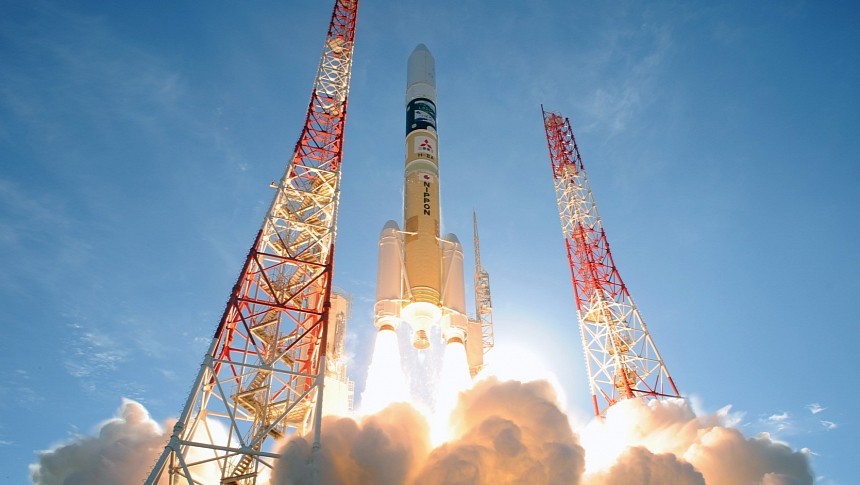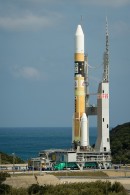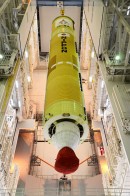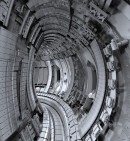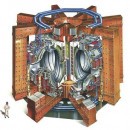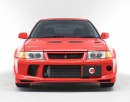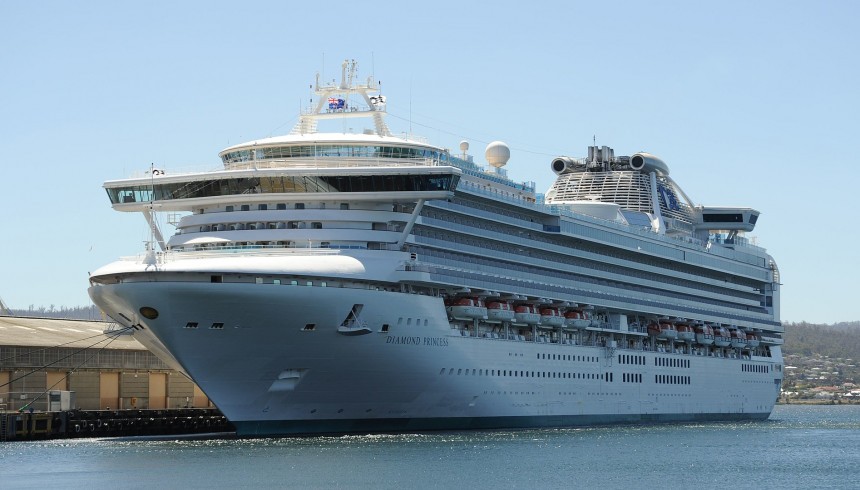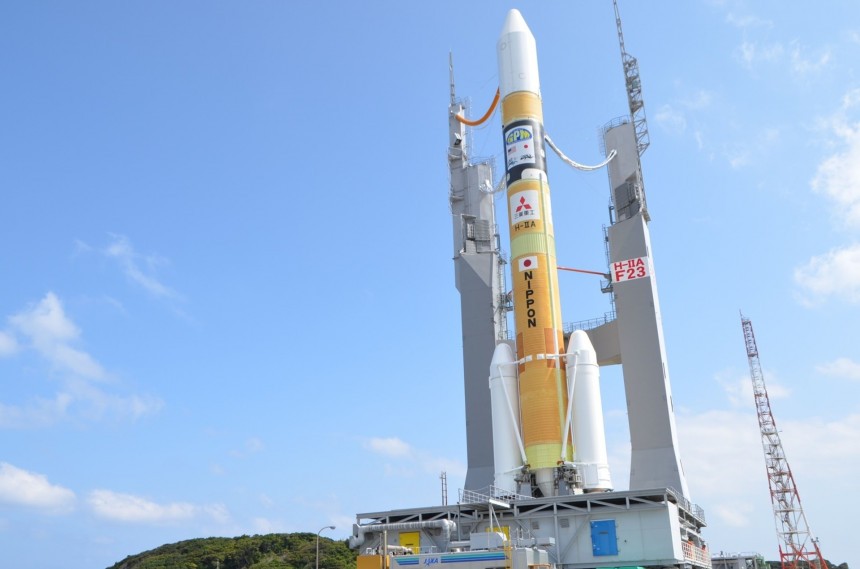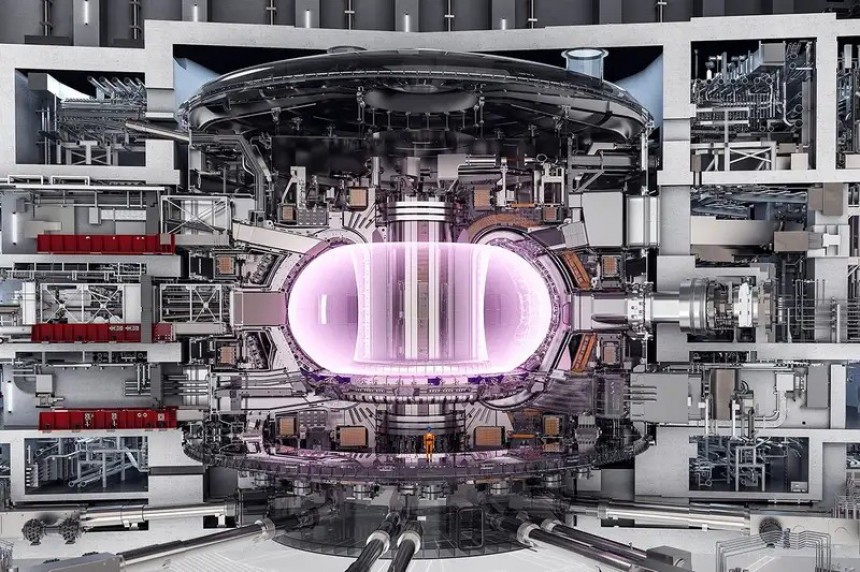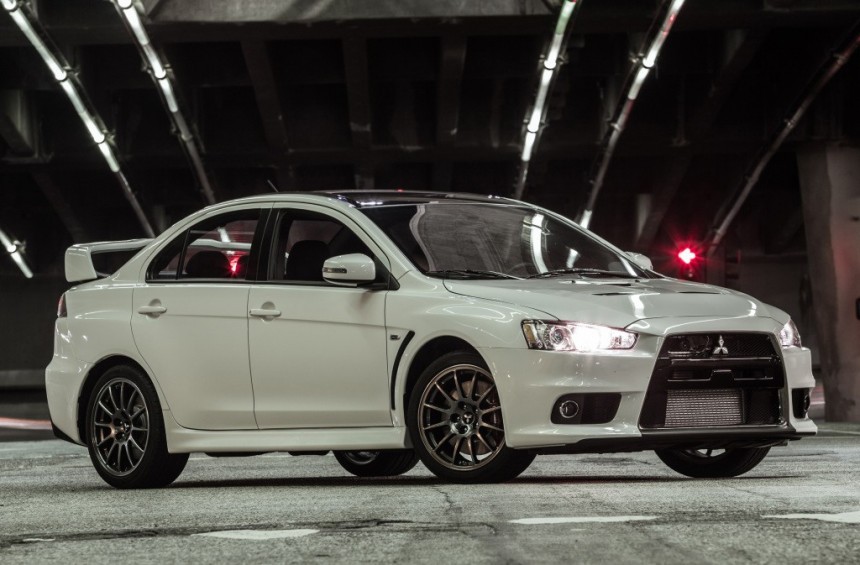If you're a petrolhead, you might forget Mitsubishi has its hands in almost every manufacturing sector. But now that the vehicle lineup at an average North American Mitsubishi dealer has roughly the same appeal as a two-month-old loaf of bread in the back of your cupboard, we think it's the perfect opportunity to showcase the less appreciated side of Mitsubishi.
We're talking about the side that builds a hell of a lot more than milquetoast crossover SUVs. These are the greatest machines ever built by Mitsubishi. Safe to say, there's a lot more going on than some Lancer Evo and 3000 GT admirers might appreciate.
The Gem-class, diesel-electric cruise ship may have roots in the more prominent Grand-class ships built by the Italian Fincantieri S.p.A. But the craftsman at Mitsubishi's shipbuilding facility in Nagasaki, Japan, brought a whole new layer of refinement to what was already a very tempting ocean vacation package. Consisting of two 115,875-ton cruise vessels, the Sapphire Princess and the Diamond Princess, these vessels were two of the largest ocean-liners in the world when the first of the two was laid down in March 2002.
By 2004, both ships were ferrying upwards of 2,600 passengers and 1,100 staff members on galavants across Asia and Oceania, depending on which hemisphere was in its summer season. With dimensions of 952 feet long (290.2 m) and 205 feet tall (62.48 m) with a 123-foot (37.5 m) beam, all 13 decks of each Gem-class cruise ship are packed to the gills with comforts, amenities, and entertainment as it operates with American-based Princess Cruises company owned by the international Carnival Corporation.
With a remarkable 46-series common-rail engine system consisting of two eight-cylinder and two nine-cylinder Wärtsilä diesel generators aided by a General Electric LM2500 turbine engine, this mammoth vessel can sail along at 22 knots (25 mph, 41 kph), while guests indulge in a breadth of restaurants, shopping centers, gyms, day spas, bars, and nightclubs aboard the ship's passenger decks. As the crown jewel in Mitsubishi's modern civilian shipbuilding exploits, the Gem class does nothing short of a spectacular job.
Remember the days when only the Soviets and the Americans could afford to launch things into space? Anyone not a native of those two countries would have told you at the time those conditions really stunk, for lack of better words. But those days are 30, even 40 years in the past by now. Mitsubishi Heavy Industries has been doing it the since the mid-1980s. With help from the American firm McDonnell-Douglas, MHI launched its first liquid-fueled carrier rocket, the H-1, in August 1986.
With a license-assembled duplicate of a McDonnell-Douglas Thor-ELT first stage and a domestically designed second stage, H-I nailed all nine of its attempted orbital satellite launches between 1986 and 1992. The next-generation H-II rocket ditched any American-centric first-stage launch equipment for hardware designed by MHI as the primary domestic contractor starting in 1994, completing five of its seven orbital launches between 1994 and 1999 using LE-7 liquid-fueled rocket engines also developed by MHI.
With the H-II's next evolution, the H-IIA, Mitsubishi brought Japanese rocket technology kicking and screaming into the 21st century. Using the same LE-7 engines as its H-II forbearer, H-IIA utilizes SRB-A-class solid rocket boosters and Castor 4AXL strap-on solid rocket boosters to lift heavier payloads longer distances than possible with older domestic Japanese launch systems. In August 2001, almost 15 years to the day after the H-1 historic first launch, the H-IIA made its debut flight.
Since then, the rocket's had the distinction of launching 39 times in a row without incident out of 45 launches in total to places like the Moon, Mars, Mercury, and Venus, via the JAXA Akatsuki mission and the Emerati Mars mission. In 2009, the updated H-IIB was launched for the first time, capable of lifting an even more impressive 42,000 lb (19,000 kg) payload to Low Earth Orbit, or roughly similar in performance to the American Atlas V and Falcon 9 Full-Thrust, the ESA's Ariane V, or the Russian Proton-M. MHI's managed to field a titan in its own right among that kind of elite company.
It seems like viable commercial nuclear fusion is a pie-in-the-sky fantasy technology humanity's been told we're 20 to 30 years away from achieving for what feels like the last half-century. But that doesn't mean people haven't tried making nuclear fusion more practical at outputting more energy from a nuclear reaction than is needed to form the reaction in the first place. Mitsubishi is one of dozens of companies at the forefront of fusion research.
Through the International Thermonuclear Experimental Reactor facility in Southern France, a consortium of international contractors, Mitsubishi included, is helping to construct the largest tokamak-class nuclear fusion reactor ever designed. Though it continues to be shrouded in controversy thanks to frequent construction delays, Mitsubishi's end of the bargain has indeed been fulfilled. Alongside their colleagues from Toshiba Energy Systems and Solutions, Mitsubishi Heavy Industries completed the first four toroidal field coils vital to the containment of high-energy nuclear plasma in May 2021.
A total of 18 D-shaped TF coils are slated to help magnetically confine high-temperature plasma in a way where the nuclear fusion between tritium and deuterium, two different isotopes of hydrogen, gives off more energy in the fusion of atoms than the considerable energy needed to initiate the reaction. This feat, known as the scientific breakeven, has only been confirmed to have taken place once, at the National Ignition Facility in Livermore, California, in December 2022. Should the ITER reactor go online as expected in 2025, it'd be well on track to being the second to reach breakeven.
For this to take place, each of ITER's 16.5-m (54.4-ft) long and nine-meter (29.5-ft) wide, and 300-metric ton (330 US ton) magnetic toroidal coils must work in tandem with an equally colossal central solenoid magnet to confine fusion plasma potentially tens of millions of degrees without damaging the fragile inner beryllium-lined containment walls. If Mitsubishi and its partners can dial in the electromagnets enough to facilitate burning (self-heating) fusion plasma for sustained periods, well, then the cat's truly out of the bag in terms of near-limitless carbon-free energy. Without MHI, none of it would be possible.
If not for the American Hellcat and Corsair, the Mitsubishi A6M Zero would have probably held onto air superiority over the Pacific Theater during World War II. Designed to replace Mitsubishi's A5M, the first low-wing monoplane in the world designed specifically for aircraft carrier service, the A6M satisfied a request from the Imperial Japanese Navy using a team of just 30 skilled designers.
Using a 940 horsepower Nakajima NK1C Sakae-12 14-cylinder radial engine fitted to an airframe no heavier than a modern pickup truck, the Zeroe's potent combination of two 7.7 mm machine guns and two 20 mm cannons proved deadly from the moment the type entered service in June 1940. Against the united Communist and Nationalist Chinese forces, Zeroes proved a lethal force against Soviet Polikarpov I-16s and American P-40 Warhawks. Against U.S. Navy F4F Wildcats, early F4U Corsairs, and Dauntless and Avenger torpedo planes, Zeroes gave American pilots all the hell they could handle.
Behind the stick of Zeroes, some of the war's most proficient aces, like Saburo Sakai, Shoichi Sugita, and Tetsuzo Iwamoto, shot down a combined triple-digit number of Allied fighters over the Pacific Ocean and over mainland China. Until the arrival of the American Grumman F6F Hellcat and, later, more powerful variants of the F4U Corsairs in 1943, there was no true equal to the Zero in terms of Allied fighters in the skies over the Pacific Theater. Before the end of the war, Mitsubishi had developed the Zero's replacement, the A7M Reppu. But it came too late to turn the tides of battle.
Today, Imperial Japan is long deceased. But in its absence, Mitsubishi has risen to become one of the most multi-faceted companies in all of Japan and even worldwide. Meanwhile, the Zero's maintained a favorable public image in its retirement. All thanks to countless appearances in movies and television series detailing World War II's Pacific Theater. It's even found a second life in online military combat games like the Battlefield series, IL-2 Sturmovik, and War Thunder.
It doesn't matter what side of the gearhead spectrum you happen to be on. From generations one through ten, folks sing the praises of the Lancer Evolution again and again. And how could any self-respecting "car guy" not appreciate a simple, honest family sedan with a two-liter turbocharged engine capable of jetting more power than any four-cylinder engine has any business producing? Pair it with an all-wheel-drive system that legitimately transformed the world of rally racing, and you have the recipe for an all-time classic sports coupe.
It feels as though Mistubishi lost a piece of their soul the day the final Lancer Evolution X left the Mizushima Plant in Okayama, Japan, on May 2-2016. Since the "Evo's" sun-setting, Mitsubishi's struggled to find much of any brand appeal in North America. Owing in large part to an arguably bland and boring lineup of forgettable crossover SUVs like the Eclipse Cross and the Outlander Sport while hoping sales of the full-size Outlander SUV compensate for gaps in sales.
Meanwhile, Mitsubishi's final non-SUV passenger car in North America after the Lancer's demise, the Mirage/Mirage G4, is a car so laughable in its puny stature and diminutive engine that it makes a Toyota Corolla look like a Maserati. Safe to say, Mitsubishi's brand image has never been the same since the Lancer Evolution, the brand's final performance car, bit the dust, seemingly for good. It's a shame because we know full well what Mitsubishi is capable of when they're on their A-game. If you read this article the whole way through, you'll know what we mean.
Gem-Cass Cruise Ships: A world-class ocean liner made better in Japan
For far longer than Mitsubishi's been building cars, shipbuilding has been the foundation of the entirety of Mitsubishi Heavy Industries' global corporate identity. Decades after MHI supplied dozens of warships to the Imperial Japanese Navy, Mitsubishi's shipbuilding division has reinvented itself in the private sector. Today, they stand as one of Asia's most skilled civilian oceanliner manufacturers. But their crown jewel has to be the Gem-class.By 2004, both ships were ferrying upwards of 2,600 passengers and 1,100 staff members on galavants across Asia and Oceania, depending on which hemisphere was in its summer season. With dimensions of 952 feet long (290.2 m) and 205 feet tall (62.48 m) with a 123-foot (37.5 m) beam, all 13 decks of each Gem-class cruise ship are packed to the gills with comforts, amenities, and entertainment as it operates with American-based Princess Cruises company owned by the international Carnival Corporation.
With a remarkable 46-series common-rail engine system consisting of two eight-cylinder and two nine-cylinder Wärtsilä diesel generators aided by a General Electric LM2500 turbine engine, this mammoth vessel can sail along at 22 knots (25 mph, 41 kph), while guests indulge in a breadth of restaurants, shopping centers, gyms, day spas, bars, and nightclubs aboard the ship's passenger decks. As the crown jewel in Mitsubishi's modern civilian shipbuilding exploits, the Gem class does nothing short of a spectacular job.
Mitsubishi H-IIA: Getting JAXA space probes into orbit since 2001
With a license-assembled duplicate of a McDonnell-Douglas Thor-ELT first stage and a domestically designed second stage, H-I nailed all nine of its attempted orbital satellite launches between 1986 and 1992. The next-generation H-II rocket ditched any American-centric first-stage launch equipment for hardware designed by MHI as the primary domestic contractor starting in 1994, completing five of its seven orbital launches between 1994 and 1999 using LE-7 liquid-fueled rocket engines also developed by MHI.
With the H-II's next evolution, the H-IIA, Mitsubishi brought Japanese rocket technology kicking and screaming into the 21st century. Using the same LE-7 engines as its H-II forbearer, H-IIA utilizes SRB-A-class solid rocket boosters and Castor 4AXL strap-on solid rocket boosters to lift heavier payloads longer distances than possible with older domestic Japanese launch systems. In August 2001, almost 15 years to the day after the H-1 historic first launch, the H-IIA made its debut flight.
Since then, the rocket's had the distinction of launching 39 times in a row without incident out of 45 launches in total to places like the Moon, Mars, Mercury, and Venus, via the JAXA Akatsuki mission and the Emerati Mars mission. In 2009, the updated H-IIB was launched for the first time, capable of lifting an even more impressive 42,000 lb (19,000 kg) payload to Low Earth Orbit, or roughly similar in performance to the American Atlas V and Falcon 9 Full-Thrust, the ESA's Ariane V, or the Russian Proton-M. MHI's managed to field a titan in its own right among that kind of elite company.
ITER fusion reactor's toroidal field coils: Real nuclear fusion in our lifetime?
Through the International Thermonuclear Experimental Reactor facility in Southern France, a consortium of international contractors, Mitsubishi included, is helping to construct the largest tokamak-class nuclear fusion reactor ever designed. Though it continues to be shrouded in controversy thanks to frequent construction delays, Mitsubishi's end of the bargain has indeed been fulfilled. Alongside their colleagues from Toshiba Energy Systems and Solutions, Mitsubishi Heavy Industries completed the first four toroidal field coils vital to the containment of high-energy nuclear plasma in May 2021.
A total of 18 D-shaped TF coils are slated to help magnetically confine high-temperature plasma in a way where the nuclear fusion between tritium and deuterium, two different isotopes of hydrogen, gives off more energy in the fusion of atoms than the considerable energy needed to initiate the reaction. This feat, known as the scientific breakeven, has only been confirmed to have taken place once, at the National Ignition Facility in Livermore, California, in December 2022. Should the ITER reactor go online as expected in 2025, it'd be well on track to being the second to reach breakeven.
For this to take place, each of ITER's 16.5-m (54.4-ft) long and nine-meter (29.5-ft) wide, and 300-metric ton (330 US ton) magnetic toroidal coils must work in tandem with an equally colossal central solenoid magnet to confine fusion plasma potentially tens of millions of degrees without damaging the fragile inner beryllium-lined containment walls. If Mitsubishi and its partners can dial in the electromagnets enough to facilitate burning (self-heating) fusion plasma for sustained periods, well, then the cat's truly out of the bag in terms of near-limitless carbon-free energy. Without MHI, none of it would be possible.
Mitsubishi A6M Zero: The most famous aircraft ever built in Japan
Using a 940 horsepower Nakajima NK1C Sakae-12 14-cylinder radial engine fitted to an airframe no heavier than a modern pickup truck, the Zeroe's potent combination of two 7.7 mm machine guns and two 20 mm cannons proved deadly from the moment the type entered service in June 1940. Against the united Communist and Nationalist Chinese forces, Zeroes proved a lethal force against Soviet Polikarpov I-16s and American P-40 Warhawks. Against U.S. Navy F4F Wildcats, early F4U Corsairs, and Dauntless and Avenger torpedo planes, Zeroes gave American pilots all the hell they could handle.
Behind the stick of Zeroes, some of the war's most proficient aces, like Saburo Sakai, Shoichi Sugita, and Tetsuzo Iwamoto, shot down a combined triple-digit number of Allied fighters over the Pacific Ocean and over mainland China. Until the arrival of the American Grumman F6F Hellcat and, later, more powerful variants of the F4U Corsairs in 1943, there was no true equal to the Zero in terms of Allied fighters in the skies over the Pacific Theater. Before the end of the war, Mitsubishi had developed the Zero's replacement, the A7M Reppu. But it came too late to turn the tides of battle.
Today, Imperial Japan is long deceased. But in its absence, Mitsubishi has risen to become one of the most multi-faceted companies in all of Japan and even worldwide. Meanwhile, the Zero's maintained a favorable public image in its retirement. All thanks to countless appearances in movies and television series detailing World War II's Pacific Theater. It's even found a second life in online military combat games like the Battlefield series, IL-2 Sturmovik, and War Thunder.
Mitsubishi Lancer Evolution: Does it even need an introduction?
It feels as though Mistubishi lost a piece of their soul the day the final Lancer Evolution X left the Mizushima Plant in Okayama, Japan, on May 2-2016. Since the "Evo's" sun-setting, Mitsubishi's struggled to find much of any brand appeal in North America. Owing in large part to an arguably bland and boring lineup of forgettable crossover SUVs like the Eclipse Cross and the Outlander Sport while hoping sales of the full-size Outlander SUV compensate for gaps in sales.
Meanwhile, Mitsubishi's final non-SUV passenger car in North America after the Lancer's demise, the Mirage/Mirage G4, is a car so laughable in its puny stature and diminutive engine that it makes a Toyota Corolla look like a Maserati. Safe to say, Mitsubishi's brand image has never been the same since the Lancer Evolution, the brand's final performance car, bit the dust, seemingly for good. It's a shame because we know full well what Mitsubishi is capable of when they're on their A-game. If you read this article the whole way through, you'll know what we mean.
